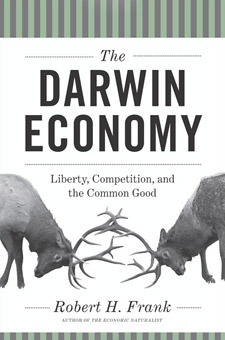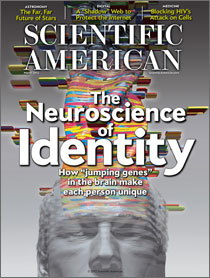
Yours truly, leading the Reason Rally Cheer (photo by John Welte)
March 24, 2012 marked the largest gathering of skeptics, atheists, humanists, nonbelievers, and “nones” (those who tick the “no religion” box on surveys) of all stripes on the Mall in Washington, D.C., across from the original Smithsonian museum. Crowd estimates vary from 15,000 to 25,000. However many it was, it was one rockin’ huge crowd that voiced its support for reason, science, and skepticism louder than any I have ever heard. Anywhere. Any time. Any place. It started raining just as the festivities gathered steam late morning, but the weather seemed to have no effect whatsoever on the enthusiasm and energy of the crowd…or the speakers and performers. The organizer and host David Silverman and his posse of tireless staff and volunteers pulled it off without a hitch. Organizing big events can be an organizational nightmare, but they did it, marking what I hope is the first of many consciousness raising events in the civil rights movement for equal treatment for us nonbelievers and skeptics. (continue reading…)
Comments Off on Reason Rally Rocks
The lesson from evolutionary economics is bottom-up self-organization, not top-down government design
A review of The Darwin Economy: Liberty, Competition, and the Common Good by Robert H. Frank. Princeton University Press, 2011, 240 pages. This review appeared online in the Journal of Bioeconomics in March 2012.
When I entered the world of competitive bicycle racing in 1980 no serious cyclist wore a helmet in training, and the leather “hair net” required by some race organizations—thin bands of leather-wrapped cotton stuffing—did nothing more than prevent your hair from getting mussed upon impacting pavement. Bell Helmets already had the technology from their motorcycle division to make a viable crash-tested safety helmet for bicycling, but elite cyclists are an elitist cohort that follows the trends of what looks good as much as what works well. The perception at the time was that a helmet was delimiting on performance and made you look like a “Fred”—two-wheel-speak for geek. Even if an individual cyclist wanted to don protection, unless everyone else did as well the competitive choice was to race sans helmet. When I was sponsored by Bell to compete in the Race Across America—the 3,000-mile nonstop transcontinental bicycle race—they engaged me to help design a helmet that elite cyclists would wear that would, in marketing theory, inspire the masses of two-wheelers to follow in emulation. We came up with the V1-Pro, a model that aped the leather hair net in design but was made of the same compressed polystyrene foam utilized in motorcycle helmets for absorbing the energy of an impact. Nonetheless, it was shunned by the pros until the Union Cycliste International (UCI)—the governing body of professional cycling—mandated the use of safety helmets for all cyclists in all races. No helmet, no race. Period. I was relieved, as were many other cyclists I knew, because I wanted to wear a helmet but didn’t want to stand out or lose a slight competitive edge. In time, as helmet use grew in popularity market forces worked effectively to make them lighter, cooler, and colorfully trendy. Now everyone wears them and we are all better for it. (continue reading…)
Comments Off on Another Fatal Conceit
The willful distortion of reality to extremes
can be harmful
ARE YOU BETTER THAN AVERAGE AS A DRIVER? I know I am. I’ll bet 90 percent of you think you are, too, because this is the well-documented phenomenon known as the above-average effect, part of the psychology of optimism.
According to psychologist Daniel Kahneman, in his 2011 book Thinking, Fast and Slow, “people tend to be overly optimistic about their relative standing on any activity in which they do moderately well.” But optimism can slide dangerously into overoptimism. Research shows that chief financial officers, for example, “were grossly overconfident about their ability to forecast the market” when tested by Duke University professors who collected 11,600 CFO forecasts and matched them to market outcomes and found a correlation of less than zero! Such overconfidence can be costly. “The study of CFOs showed that those who were most confident and optimistic about the S&P index were also overconfident and optimistic about the prospects of their own firm, which went on to take more risk than others,” Kahneman notes.
Isn’t optimistic risk taking integral to building a successful business? Yes, to a point. “One of the benefits of an optimistic temperament is that it encourages persistence in the face of obstacles,” Kahneman explains. But “pervasive optimistic bias” can be detrimental: “Most of us view the world as more benign than it really is, our own attributes as more favorable than they truly are, and the goals we adopt as more achievable than they are likely to be.” For example, only 35 percent of small businesses survive in the U.S. When surveyed, however, 81 percent of entrepreneurs assessed their odds of success at 70 percent, and 33 percent of them went so far as to put their chances at 100 percent. So what? In a Canadian study Kahneman cites, 47 percent of inventors participating in the Inventor’s Assistance Program, in which they paid for objective evaluations of their invention on 37 criteria, “continued development efforts even after being told that their project was hopeless, and on average these persistent (or obstinate) individuals doubled their initial losses before giving up.” Failure may not be an option in the mind of an entrepreneur, but it is all too frequent in reality. High-risk-taking entrepreneurs override such loss aversion, a phenomenon most of us succumb to in which losses hurt twice as much as gains feel good that we developed in our evolutionary environment of scarcity and uncertainty. (continue reading…)
read or write comments (10)
Last month, the Indiana State Senate approved a bill that would allow public school science teachers to include religious explanations for the origin of life in their classes. If Senate Bill 89 is approved by the state’s House its co-sponsor, Speaker of the House Dennis Kruse, hopes that this will open the door for the teaching of “creation-science” as a challenge to the theory of evolution, which he characterized as a “Johnny-come-lately” theory compared to the millennia-old creation story in Genesis: “I believe in creation and I believe it deserves to be taught in our public schools.” In this bill Kruse is challenging the U.S. Supreme Court’s 1987 decision in Edwards v. Aguillard that the mandatory teaching of a bible-based creation story in Louisiana public schools was violative of the first amendment and therefore unconstitutional (by a vote of 7-2, with Rehnquist and Scalia dissenting). “This is a different Supreme Court,” Kruse defiantly said in an interview. “This Supreme Court could rule differently.”
The language of the bill, however, was expanded by the Indiana State Senate Minority Leader Vi Simpson, a democrat, and includes the possibility of teaching the creation stories of religions other than Christianity. “The bill was originally talking about ‘Creationist Science,’ and I thought that was a bit of an oxymoron,” Simpson told the Village Voice. “I wanted to draft an amendment that would do two things. First, it would remove it from the science realm. And second, school boards and the state of Indiana should not be in the business of promoting one religion over another.” The bill now includes the following proviso: “The governing body of a school corporation may offer instruction on various theories of the origin of life. The curriculum for the course must include theories from multiple religions, which may include, but is not limited to, Christianity, Judaism, Islam, Hinduism, Buddhism, and Scientology.” (continue reading…)
Comments Off on Teaching Allah and Xenu in Indiana
A couple weeks ago, I participated in an online debate at Evolution News & Views with Center for Science & Culture fellow Michael Flannery on the question: “If he were alive today, would evolutionary theory’s co-discoverer, Alfred Russel Wallace, be an intelligent design advocate?” Before reading this week’s post, you can review my opening statement in my previous Skepticblog and Flannery’s reply. The following is my response. A link to Flannery’s final reply can be found near the end of this page.
Michael Flannery’s assessment of Alfred Russel Wallace as a prescient scientist who anticipated modern Intelligent Design theory is premised on the belief that modern evolutionary biologists have failed to explain the myriad abilities of the human mind that Wallace outlined in his day as unanswered and—in his hyperselectionist formulation of evolutionary theory—unanswerable. In point of fact there are several testable hypotheses formulated by scientists—evolutionary psychologists in particular—that make the case that all aspects of the human mind are explicable by evolutionary theory. Flannery mentions just one—Steven Pinker’s hypothesis that cognitive niches in the evolutionary environment of our Paleolithic hominid ancestors gave rise to abstract reasoning and metaphorical thinking that enabled future humans to navigate complex social and cognitive environments found in the modern world. In his PNAS paper Pinker outlines two processes at work: “One is that intelligence is an adaptation to a knowledge-using, socially interdependent lifestyle, the ‘cognitive niche’.” And: “The second hypothesis is that humans possess an ability of metaphorical abstraction, which allows them to coopt faculties that originally evolved for physical problem-solving and social coordination, apply them to abstract subject matter, and combine them productively.” Together, Pinker concludes: “These abilities can help explain the emergence of abstract cognition without supernatural or exotic evolutionary forces and are in principle testable by analyses of statistical signs of selection in the human genome.” Pinker then outlines a number of ways in which the cognitive niche hypothesis has been and can continue to be tested.
In point of fact, Darwin himself addressed this larger problem of “pre-adaptation”: Since evolution is not prescient or goal directed—natural selection operates in the here-and-now and cannot anticipate what future organisms are going to need to survive in an ever-changing environment—how did certain modern useful features come to be in an ancestral environment different from our own? In Darwin’s time this was called the “problem of incipient stages.” Fully-formed wings are obviously an excellent adaptation for flight that provide all sorts of advantages for animals who have them; but of what use is half a wing? For Darwinian gradualism to work, each successive stage of wing development would need to be functional, but stumpy little partial wings are not aerodynamically capable of flight. Darwin answered his critics thusly: (continue reading…)
Comments Off on The Natural & the Supernatural: Alfred Russel Wallace and the Nature of Science




